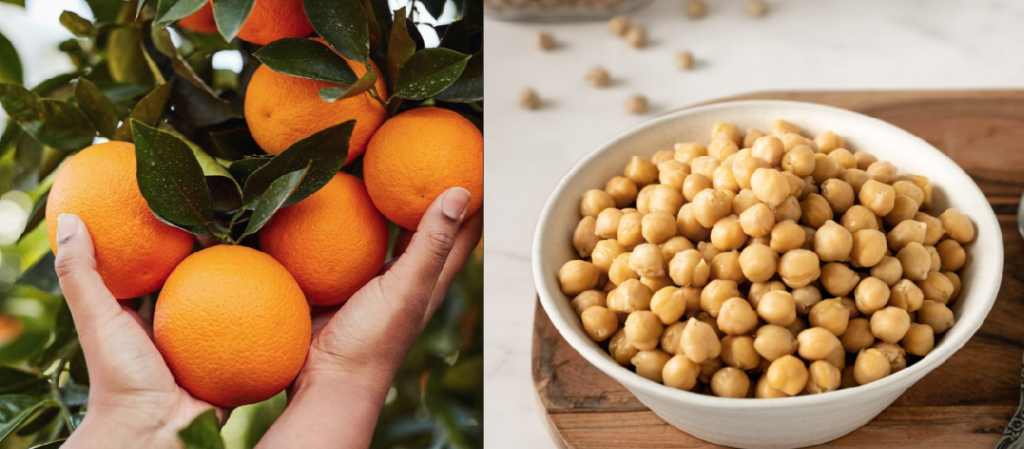Researchers find that rich flavonoid foods can relieve endometriosis symptoms; See which
Research has revealed a link between rich flavonoid foods and relief from endometriosis symptoms. Understand.

Researchers at the Veterinary Medicine School and Biomedical Sciences of the University of Texas A&M have discovered a relationship between a compound found in fruits and vegetables, flavonoids, and a decrease in the impact of endometriosis symptoms.
On a article Published in the magazine Endocrinology, the researchers described how flavonoids are able to help reduce the symptoms of inflammatory conditions such as endometriosis, a disease that affects ten women in Brazil, according to the Ministry of Health.

Foods that contain flavonoids
Flavonoids are antiviral, antioxidant and anti-inflammatory compounds that are not naturally produced by the human body, and therefore need to be ingested through the consumption of fruits, vegetables and medicinal plants, or through supplements. Some foods rich in flavanone, for example, which is a subtype of flavonoid, are the dehydrated oregano, grape and orange.
Flavonoids can also be obtained by consuming lettuce, purple onion, apple and lemon. The chickpeas and strawberry are rich in anthocyanins, another subtype of flavonoid, as well as red wine.

"Scientists have known for some time that people who eat the most fruits and vegetables tend to live longer and have a lower risk of contracting many types of diseases, including Parkinson and Alzheimer's diseases," explained Dr. Stephen Safe, a professor at Department of Veterinary Physiology and Pharmacology at the University.
According to the researcher, with the research, they managed to show that there is a connection between flavonoids and endometriosis. “By drinking more foods that contain flavonoids, people are more likely to reduce the chances of endometriosis or to reduce the severity of symptoms,” he says. Other foods that contain flavonoids are:
- Dehydrated and fresh parsley
- lime
- Red fruits, such as blueberry, blackberry and strawberry
- Pear
- Orange juice
- Grape juice
- Artichoke
- Radish
- Purple cabbage
- Fig
- Chicory
- Celery
- Green pepper
- Boiled asparagus
- Buckwheat
- Walnut
- Hazelnut
- Green Tea
- Black tea
- Bitter chocolate
- Chocolate powder
According to research on flavonoids, these bioactive compounds interact with specific receptors in our body, NR4A1 and NR4A2, which act as inflammation regulators, a characteristic effect of endometriosis.
The researchers found that the two flavonoids that showed the greatest influence on NR4A1 and NR4A2 were quercetin and kaempferol, commonly found in apples, broccoli, red fruits, tea, onion and red wine.

Protection against endometriosis symptoms
Endometriosis is a often painful condition. According to the Ministry of Health, in 2021, more than 26,400 care were made in the Unified Health System (SUS), and eight thousand hospitalizations were recorded in the public health network for patients suffering from symptoms of endometriosis.
This inflammatory disease is caused by tissue cells that coat the uterus (endometrium) that, instead of being expelled from the body during menstruation, return to the ovaries or to the abdominal cavity, causing bleeding.
The main symptom of endometriosis is pain in the pelvic region. In addition, those who present this condition usually have more intense menstrual cramps that can intensify over time, requiring the use of medicines, and in some cases, hospitalization.
Other symptoms of endometriosis are pain during or after sex and excess bleeding in the menstrual period. Bleeding in the middle of the menstrual cycle can also occur in women with this condition. Other symptoms are: tiredness, constipation, diarrhea, nausea and swelling.

Some women with endometriosis have no symptoms, and in these cases the condition is usually diagnosed during testing for the treatment of infertility. Both infertility and difficulty to get pregnant are more common in women with the disease.
“The longer it takes a diagnosis, the more endometriosis is spreading inside the abdomen, and may lead to infertility by anatomical changes, tubal obstruction, ovulation change. Therefore, the ideal is early detection and treatment, ”explains Edmund Baracat, gynecologist and obstetrician, Dean of Undergraduate at the University of São Paulo (USP).

Candace Cameron Bure is the "biggest celebrity" that this pop star has ever met

